Are you on the lookout for the simplest technique to arrange a Blast RPC node? If that’s the case, you’re exactly the place it’s worthwhile to be. On this information, we’ll introduce you to Moralis, the business’s #1 node supplier. With our user-friendly point-and-click interface, now you can arrange Blast RPC nodes free of charge with out breaking a sweat. Are you desirous to learn the way this works? Try the temporary breakdown of the method right here:
Step 1: Enroll with Moralis.
Step 2: Log in to the Moralis admin panel, navigate to the “Nodes” tab, and click on “+ Create Node”:
Step 3: Choose “Blast”, adopted by “Mainnet”, and hit the “Create Node” button:
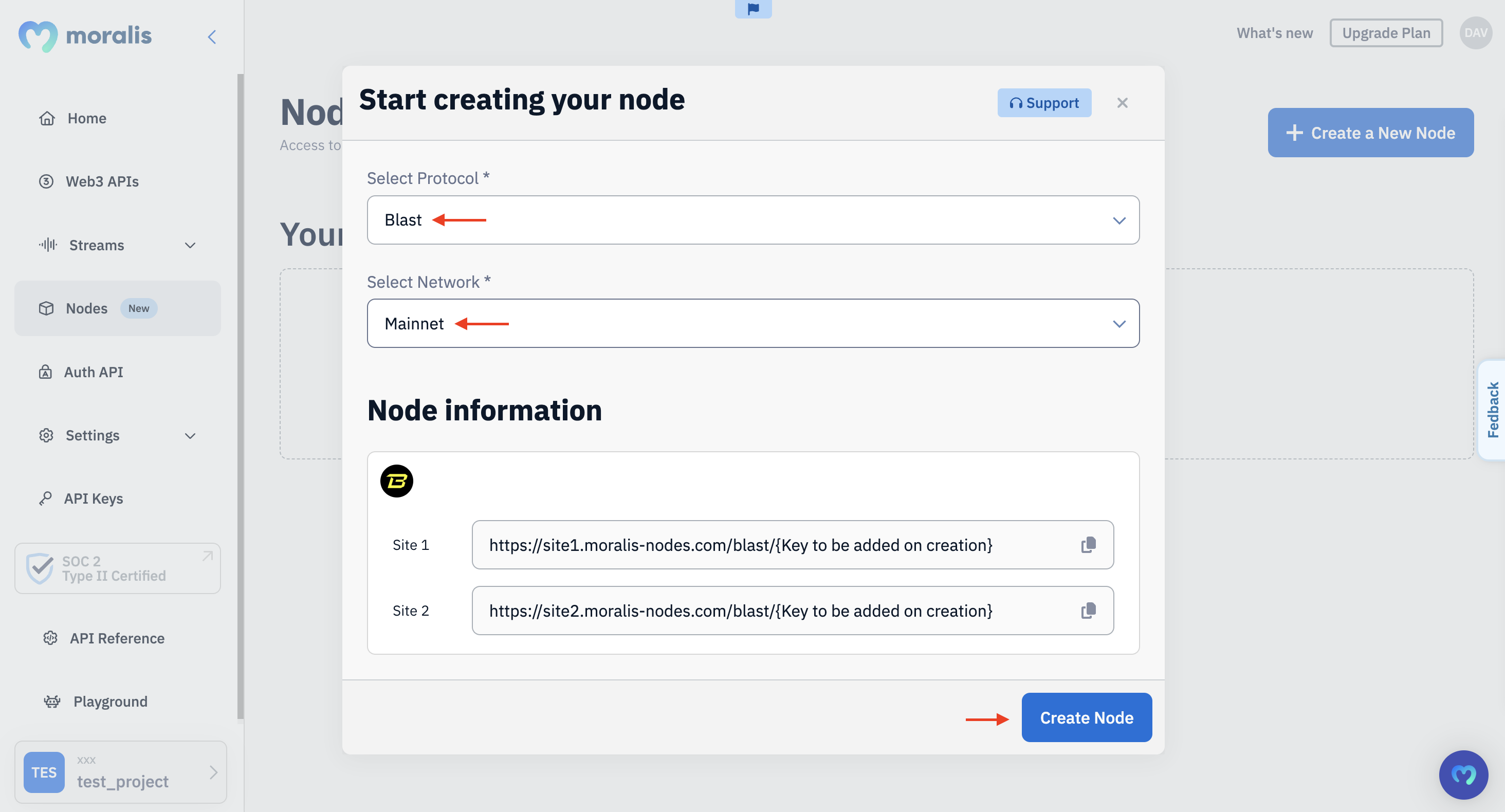
By following the steps above, you’ll obtain two URLs to your Blast RPC nodes:
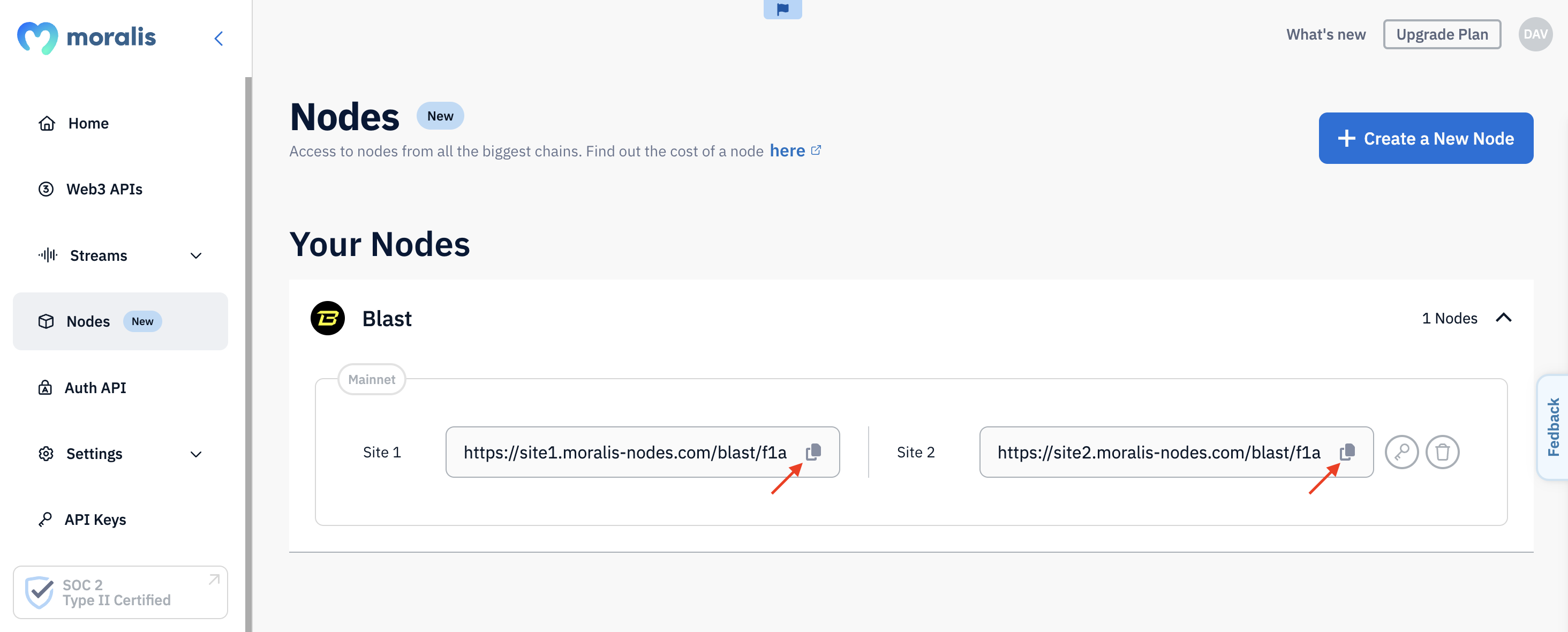
That’s it! When utilizing Moralis as your supplier, it doesn’t need to be tougher than this to arrange Blast nodes. Nevertheless, for a extra in-depth tutorial, be part of us on this information as we break down every step in additional element.
Able to arrange a Blast node? Don’t overlook to enroll with Moralis. You may register a Moralis account free of charge and acquire instantaneous entry to our node service and different premier improvement instruments!
Overview
Organising Blast RPC nodes by yourself requires a sturdy infrastructure with important computational energy, ample storage capability, substantial bandwidth, and extra. Consequently, operating a Blast RPC node might be each expensive and time-consuming. Fortuitously, now you can bypass these challenges by choosing a dependable node supplier like Moralis!

At Moralis, we deal with all of the underlying complexities, permitting you to arrange a Blast RPC node with out breaking a sweat. The truth is, with our intuitive consumer interface, you possibly can arrange RPC nodes for 30+ chains on the click on of a button. Need to study extra about how this works? Be part of us on this information as we introduce you to Moralis’ node service. Let’s dive straight in!
What’s Blast?
Blast is an EVM-compatible layer-2 (L2) scaling resolution for the Ethereum blockchain that provides native yield for Ether (ETH) and stablecoins. The community leverages optimistic roll-up know-how to sort out the scalability problems with Ethereum by rising transaction throughput and offering decrease gasoline charges.

However what makes Blast distinctive?
Auto Rebasing: Blast is designed to natively rebase ETH on the community, permitting customers to seamlessly transact and construct dapps across the cryptocurrency.
Layer-1 Staking: Yield from L1 staking, initially Lido, is autonomously transferred to customers by way of rebasing ETH on the Blast community. This wasn’t doable till Ethereum’s Shanghai replace, which was deployed in 2023.
T-Invoice Yield: Customers who bridge stablecoins obtain USDB, which is Blast’s auto-rebasing stablecoin. The yield from this token comes from MakerDAO’s on-chain T-Invoice protocol. And USDB might be redeemed for DAI when it’s bridged again from Blast to Ethereum.
Low Threat: By integrating native yield mechanisms, Blast minimizes the danger of asset depreciation. This ensures that customers’ property develop quite than diminish over time.
With this overview of what Blast is, let’s now discover some advantages of constructing on the community!
Advantages of Constructing on Blast
There are a number of advantages to constructing dapps on Blast, and beneath, we’ll discover 4 outstanding examples:
Scalable: Blast leverages optimistic roll-up know-how to bundle many transactions off-chain, submitting them to the Ethereum mainnet in bulk. Via this methodology, Blast is ready to enhance transaction throughput, considerably decreasing community congestion.
Price-Environment friendly: Since Blast reduces the load on the Ethereum mainnet, transaction charges are decreased. This makes dapp utilization extra reasonably priced, which, in flip, can appeal to a wider consumer base.
Safe: As an L2 scaling resolution, Blast inherits safety from the underlying Ethereum community. In return, which means Ethereum’s stable infrastructure protects funds and transactions.
Developer-Pleasant: With Blast’s EVM compatibility, it’s doable to construct dapps with acquainted instruments like MetaMask and commonplace programming languages like Solidity. This offers a extra seamless onboarding course of for current Ethereum builders.
What are Blast RPC Nodes?
Blast RPC nodes are computer systems and different units that preserve the community’s performance, safety, and integrity. They obtain this by validating transactions, storing knowledge, taking part in consensus mechanisms, and way more. The Blast community consists of quite a few such nodes working collectively to make sure environment friendly community operations.

However what are some frequent use circumstances for Blast RPC nodes?
Blast RPC nodes serve a number of essential capabilities inside blockchain networks. One main use is transaction validation, which is prime for sustaining the integrity and safety of any blockchain. Moreover, sure nodes, like archive nodes, retailer a complete document of all transaction and sensible contract knowledge on the chain, which is crucial for verifying community exercise.
One other important use of Blast RPC nodes is in Web3 improvement. These nodes allow builders and dapps to work together with the Base community, facilitating each the studying and writing of blockchain knowledge. And as you possibly can think about, that is fairly necessary for dapp improvement.
That offers you an outline of what Blast RPC nodes are. Within the following part, we’ll present you methods to arrange a Blast node utilizing Moralis, the business’s main node supplier!
Introducing Moralis – The Best Approach to Set Up Blast RPC Nodes
Moralis stands out because the business’s main node supplier. With our intuitive consumer interface, it’s doable to run nodes for 30+ chains on the click on of a button. As such, when leveraging Moralis, you possibly can arrange Blast RPC nodes with out breaking a sweat!
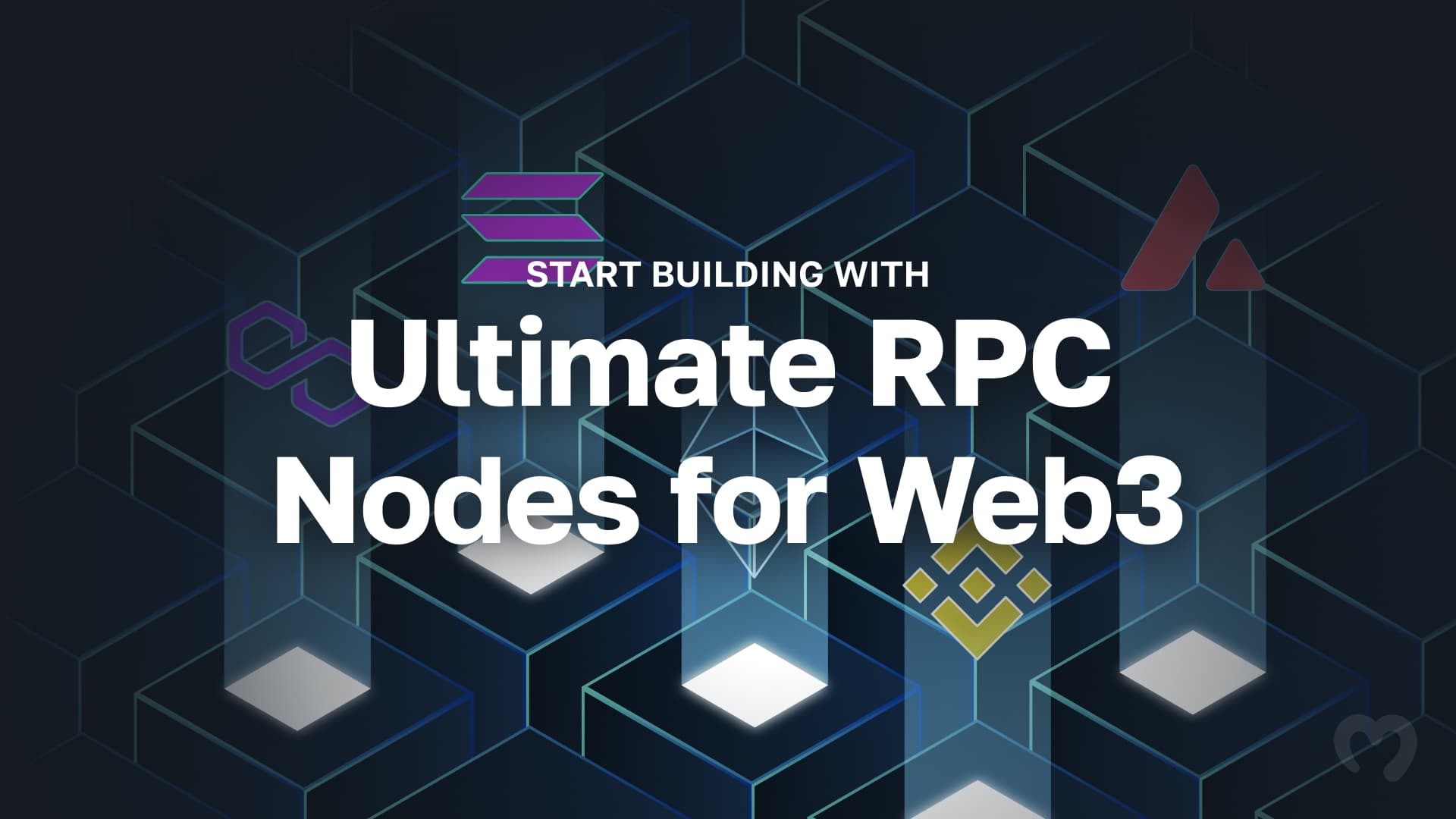
However what makes our nodes one of the best within the enterprise?
Reliability: Moralis’ nodes are engineered to fulfill the best reliability requirements, guaranteeing 99.9% uptime.
Pace: With Moralis’ nodes, you get to expertise lightning-fast response occasions as little as 70 milliseconds, delivering the information you want immediately.
Safety: As the one SOC 2 Kind 2 licensed infrastructure supplier in Web3, Moralis provides unmatched knowledge safety.
Scalability: Designed to develop along with your initiatives, Moralis’ nodes will seamlessly deal with elevated visitors as your dapp features traction.
That offers you an outline of our premier node service. Within the subsequent part, we’ll present you methods to arrange a Blast RPC node in three easy steps!
3-Step Tutorial: Tips on how to Run Blast RPC Nodes
Organising a Blast RPC node with Moralis is simple and might be accomplished in three easy steps:
Signal Up with Moralis
Set Up a Blast Node
Combine Your Blast Node
Now, let’s dive into step one and get began!
Step 1: Signal Up with Moralis
To arrange Blast RPC nodes, you’ll first want a Moralis account. As such, in the event you don’t have one but, click on the “Begin for Free” button on the high proper of the Moralis web site and observe the registration directions:
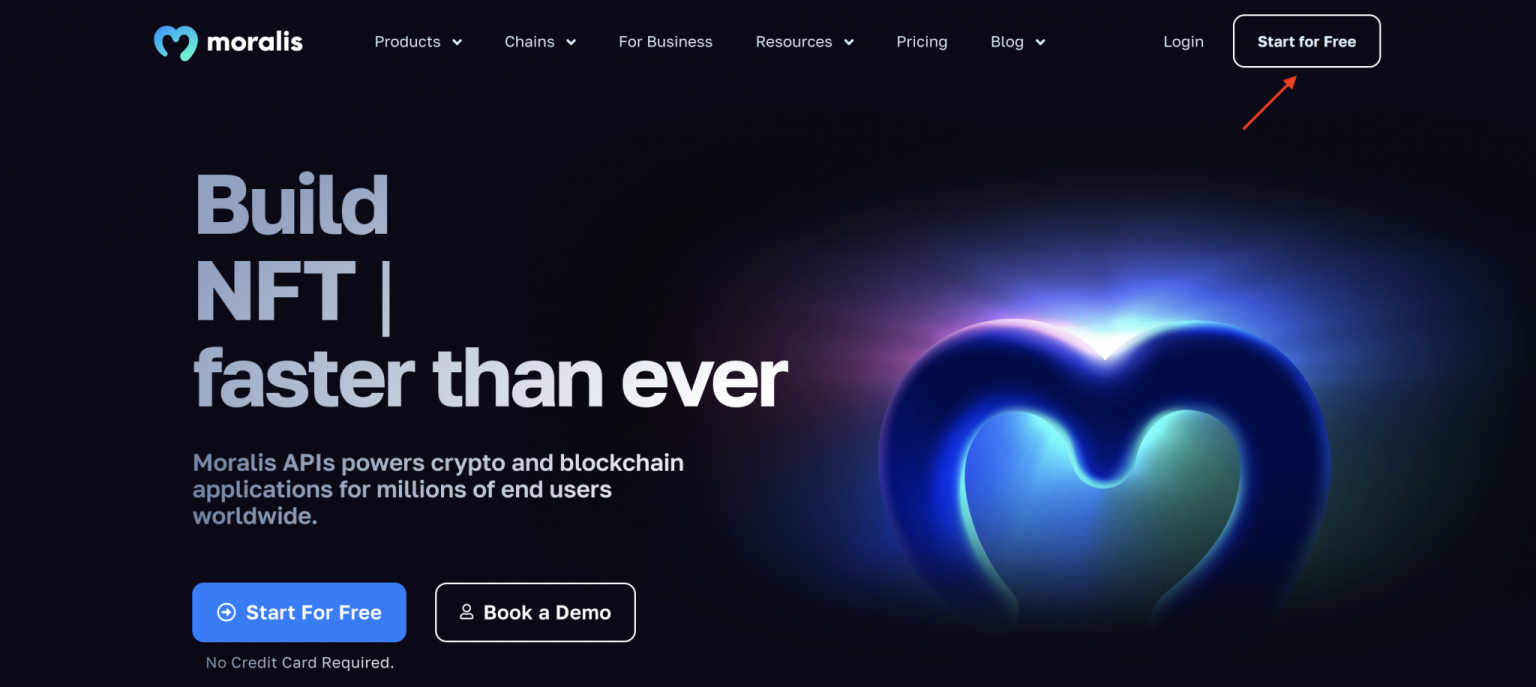
Step 2: Set Up a Blast Node
With an account at hand, login, go to the “Nodes” tab, and provoke the setup course of by clicking the “+ Create Node” button:
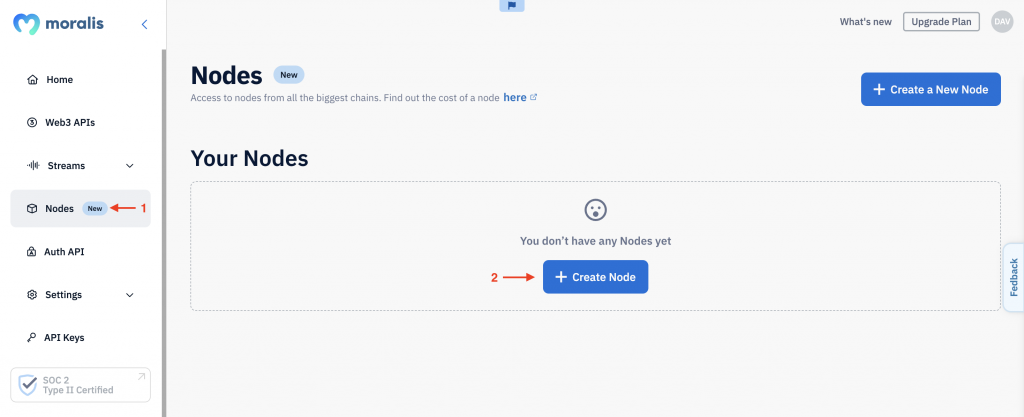
Configure your node by deciding on “Blast” adopted by “Mainnet”:
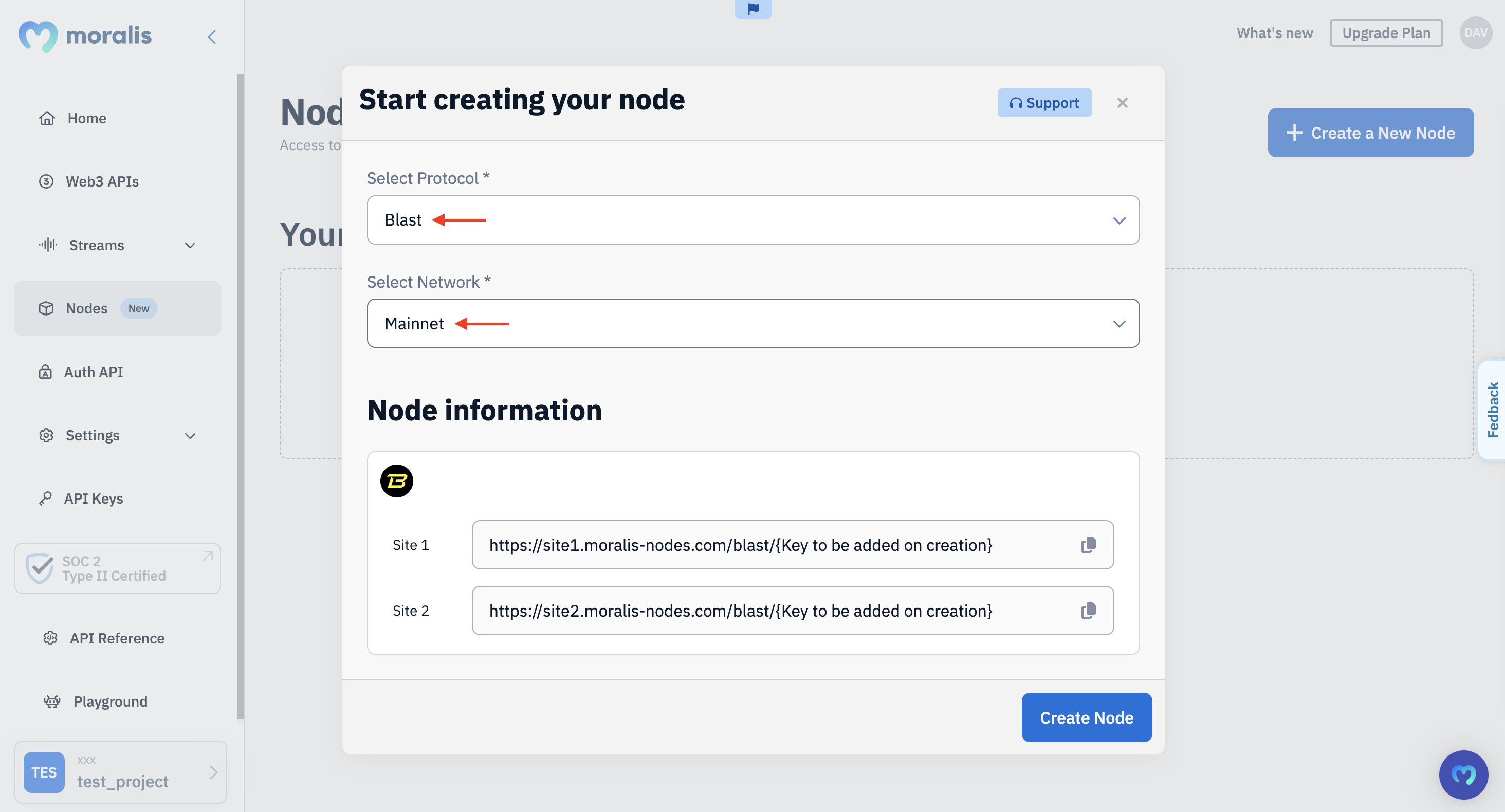
Click on the “Create Node” button:
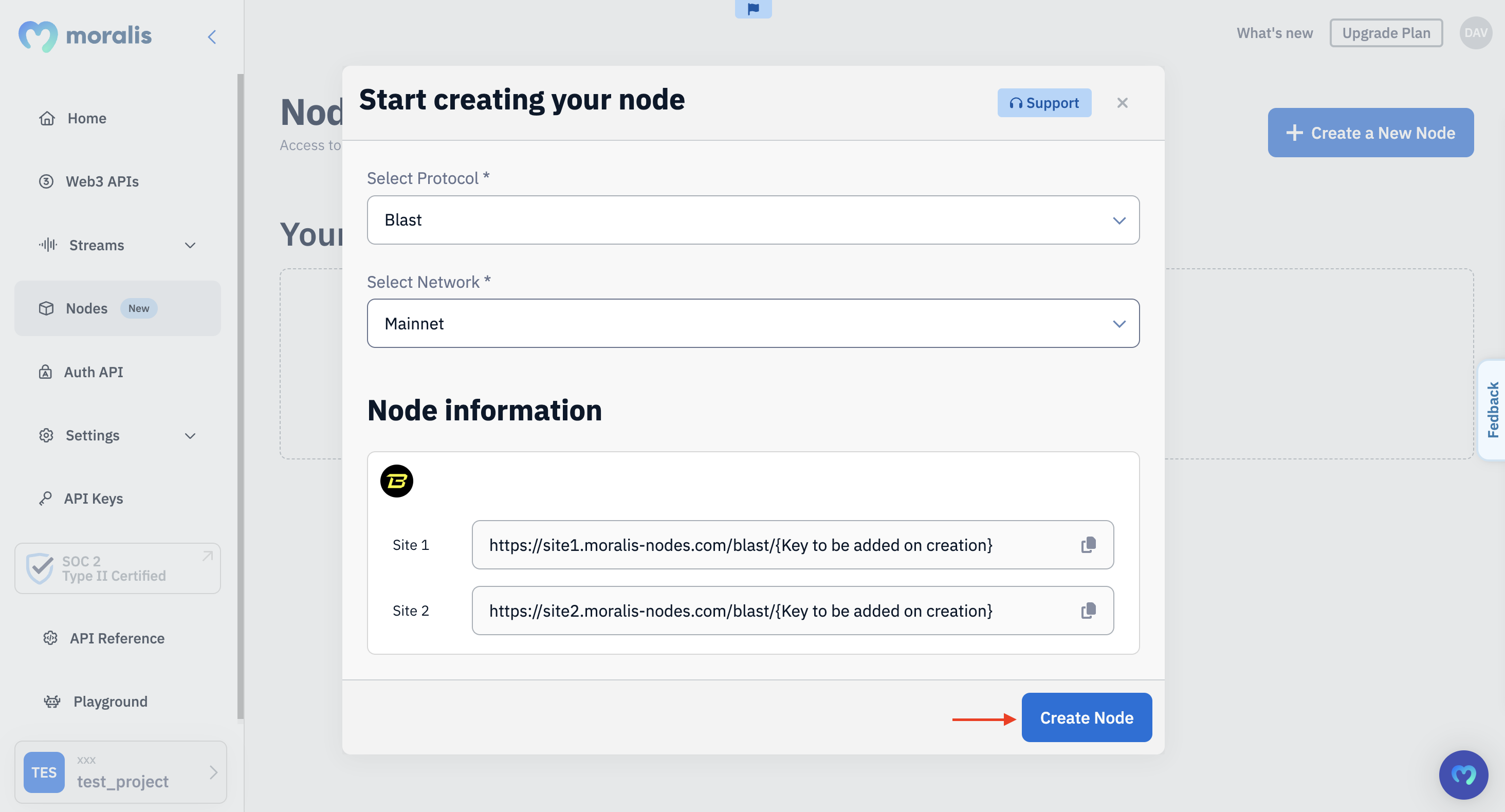
Step 3: Combine Your Blast Node
After clicking the “Create Node” button, you’ll obtain two URLs to your Blast nodes. Merely copy and combine one in all these URLs into your dapp to work together with the Blast community:

That’s it! Organising Blast RPC nodes is simple with Moralis!
Tips on how to Name Blast RPC Nodes
Now that you know the way to run a Blast RPC node with Moralis, we’ll present you methods to name it utilizing Ethers.js. Extra particularly, we’re going to point out you methods to fetch the native stability of any Blast pockets!
Earlier than you get began, be sure to have the next prepared:
From right here, you possibly can observe the steps beneath to name your Blast RPC nodes:
Step 1: Launch your built-in improvement atmosphere (IDE), arrange a folder, open the terminal, and initialize a brand new undertaking with the next command:
npm init
Step 2: Set up Ethers.js with the terminal command beneath:
npm set up ethers
Step 3: Add “sort”: “module” to your “bundle.json” file:
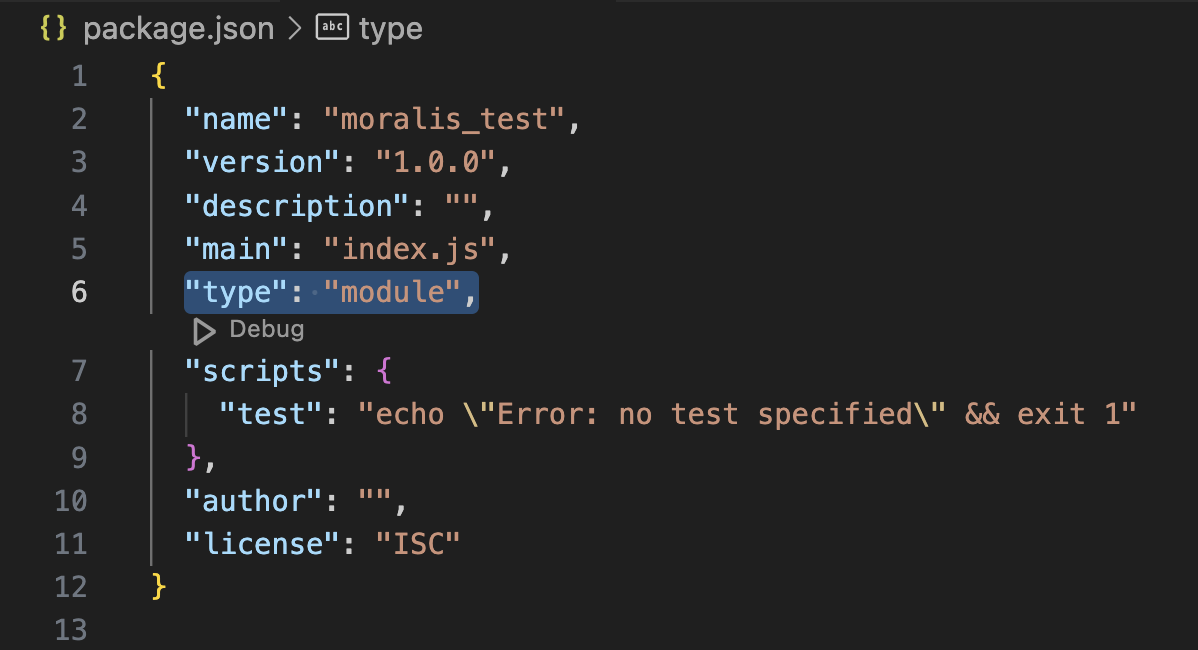
Step 4: Create a brand new “index.js” file and add the next code:
import { ethers } from “ethers”;
const supplier = new ethers.suppliers.JsonRpcProvider(“YOUR_NODE_URL”);
const tackle = “0x442b7936b3a97f15bb88640d04bb44fae7da9fb3”;
const stability = await supplier.getBalance(tackle);
console.log(“Steadiness: “, ethers.utils.formatEther(stability));
Swap YOUR_NODE_URL to your Blast RPC node URL and configure the tackle parameter to suit your question:

Step 5: Run the code with the next terminal command:
node index.js
After executing the command above, you’ll obtain the native stability of the desired pockets. That is what it ought to appear like in your terminal:
Steadiness: 0.01004
Congratulations! You now know methods to make RPC calls to your Blast nodes!
For a extra in-depth tutorial with different examples of the kinds of knowledge you possibly can fetch along with your Blast RPC nodes, please watch the Moralis YouTube video beneath:
Drawbacks of Nodes
Whereas nodes are an enormous a part of Web3 improvement, they aren’t all the time the most suitable choice, particularly when querying on-chain knowledge. However why is that? To reply this query, let’s discover three drawbacks of nodes:
Chain-Particular: Nodes are chain-specific, that means they’re tied to a sure blockchain community. This requires organising and sustaining a node for every blockchain you intend to work together with.
Advanced to Question: Nodes are advanced to question. You may’t ask frequent questions like, “What ERC-20 tokens is pockets X holding?” To get such data, you will need to first make a number of requests after which compile the information your self.
Uncooked Knowledge: Once you question a node, you obtain uncooked blockchain knowledge. Earlier than it turns into usable, it must be processed, which usually consists of decoding, deciphering, and formatting the knowledge. This may be each time-consuming and expensive.

However there must be a greater approach, proper?
Relating to fetching on-chain knowledge, you’re a lot better off utilizing a Web3 API supplier like Moralis. With our premier APIs, now you can question decoded blockchain knowledge with just some traces of code. Need to study extra about this? Be part of us within the subsequent part as we dive a bit deeper into Moralis!
Past Blast RPC Nodes – Exploring Moralis’ Web3 APIs
Moralis is Web3’s main API supplier, providing you with 10+ interfaces specialised for varied use circumstances. Some outstanding examples embrace the Token API, Streams API, Pockets API, and lots of extra. With these APIs, you possibly can seamlessly fetch decoded knowledge with out breaking a sweat. As such, whether or not you’re constructing a cryptocurrency pockets, portfolio tracker, decentralized alternate (DEX), or different platforms, we’ve got obtained your knowledge wants coated!

Listed below are a couple of advantages of leveraging Moralis’ Web3 APIs:
Complete: Our APIs are specifically designed with the result in thoughts, providing you with extra knowledge with fewer API calls. This lets you construct your Web3 initiatives sooner and extra effectively.
Cross-Chain: Don’t trouble with a brand new supplier for every chain you’re trying to work together with. Use Moralis’ really cross-chain suitable APIs and construct dapps throughout all main chains with one unified toolkit.
Trusted: 100,000+ builders and huge enterprises, together with MetaMask, Opera, Blockchain.com, and extra, already belief and use Moralis as their knowledge supplier.
If you happen to’d prefer to dive into our suite of premier improvement instruments, please go to the official Web3 API web page for extra data!
Abstract: Tips on how to Set Up a Blast RPC Node for Free
Organising a Blast RPC node from scratch might be fairly tedious with out the correct sources. Doing so sometimes requires a posh infrastructure with substantial computational energy, storage capability, and bandwidth. Nevertheless, you possibly can bypass these challenges by utilizing a Web3 node supplier like Moralis.

At Moralis, we simplify operating blockchain nodes by managing all of the underlying complexities for you. In return, you possibly can leverage our intuitive consumer interface to run Blast RPC nodes with only a click on of a button.
However what units our nodes aside from the competitors?
99.9% Uptime
Response Instances from 70 ms
SOC 2 Kind 2 Licensed
If you happen to loved this text on Blast RPC nodes, discover extra of our content material on the weblog. For instance, you would possibly discover our guides on different blockchain nodes helpful:
To arrange your personal Blast RPC nodes, don’t overlook to register for a free account with Moralis. Doing so provides you with speedy entry to our node service and premier Web3 APIs!








